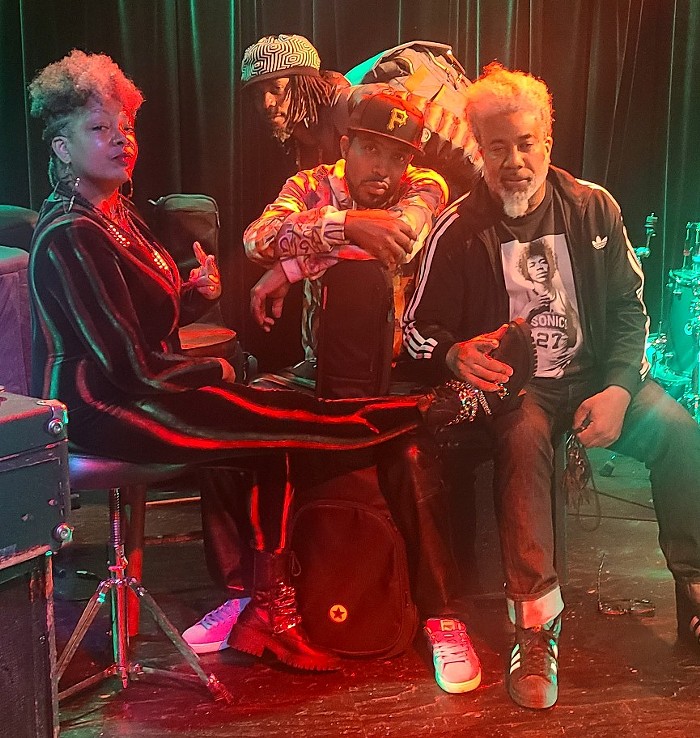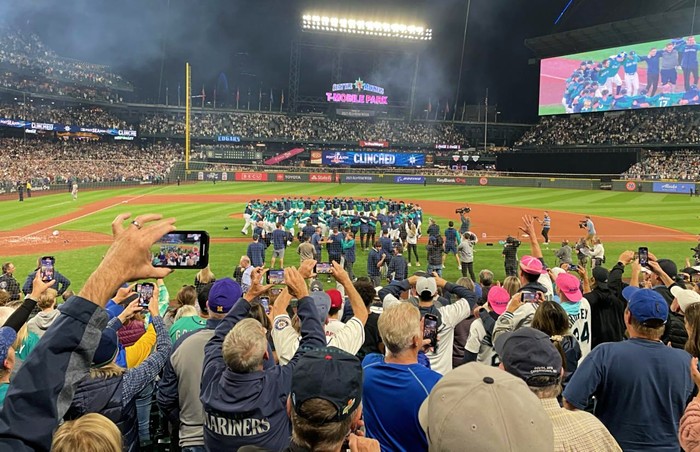I have dreams I can never forget. One happened about 30 or so years ago and involved a song by Grace Jones, "Slave to the Rhythm." It might very well be the most Hegelian tune ever made. Jones, who transitioned from a modeling career to a pop star in the late '70s, presents a vast history of labor. Humans must work, exert their biological power ("Fire burns, heart beats strong") to make this world of their own. Also, hers is a transhistorical view of work: "Axe to wood, in ancient time, man machine, power line." This action, this labor must never cease. We must "keep it, keep it up."
This was a strange song for a black person to sing. Did she really see slavery as necessary, universal, and the essence of labor? And who exactly was she singing to? Those in the factory? Those on the fields? Those building things or destroying them? I could not tell. This is why the song, which has a slamming go-go beat, is gorgeously monstrous and produced one of the most vivid dreams of my life.
I closed my eyes and soon found myself in a dark world with sparks flying everywhere and workers driving dump trucks filled with earth. The night was as endless as the trucks, the power lines, and the shadows of laboring people. I woke up with a vivid and lasting impression of that industrial nightmare. "Don't cry [Charles], it's only the rhythm," Jones sang in my head.
I mark that dream as the beginning of what would become my Marxism. Not only because I found the same terrifying imagery—Victorian machines, "the muscles, sinews and blood of living labourers," the long working hours—in Karl Marx's Capital: Volume One, but also because Marx never really transcended the Hegelian worship of labor power, which made the world not in the image of the masters, but those who worked day and night. This, I think, was Jones's vision—the power of her vocals expressing the eternal power of labor—which I no longer agree with.
The labor expended in the mines of Johannesburg, or on the plantations of Georgia, or in the factories of Manchester cannot be compared to that expended by a person whose economic base was simply "axe to wood." But what can I do in these gig-economy days but dance to this strangest of pop tunes, which forms the heart of her concept album of the same name.
Released in 1985 and produced by Trevor Horn (the genius behind the '80s new wave pop group Art of Noise) Slave to the Rhythm was a celebration of Jones's career in popular culture, or closer yet, pop art. She was a model who was often masculine and always very black in appearance. She then became a singer with a string of hits that explored reggae "I've Seen That Face Before (Libertango)," rock ("Demolition Man"), funk ("Pull Up to the Bumper"), and, in the 1970s, disco ("La Vie En Rose"). By 1985, it was time to celebrate her greatness, her moves, her constant innovations in music videos, fashion, music, and even commercials.
In 2008, Jones turned against her deification labor, the Hegelianism of "Slave to the Rhythm" (a song she did not write), and went full Marx with "Corporate Cannibal" (a song she co-wrote). The Victorian werewolves and vampires found in the latter returned in the former as the eaters of human flesh in a neoliberal world.
From my review of the video for "Corporate Cannibal":
The whole work is unpleasant to watch and hear—a grinding beat, a morphing monster. This is not a spectacle of corporate capital, corporate greed, corporate hunger. A spectacle seduces the thing it exploits and annihilates. With Jones as the corporate beast, there is no seduction, no sugar, no soft suffocation. Grace Jones makes every effort to fully represent the terrifying force of today’s global rich.
A few months after Jones released "Corporate Cannibal," Lehman Brothers collapsed. A few months later Wall Street, ground zero of American greed, was bailed out by the state and the long Great Recession began. With Jones, timing is everything.
Grace Jones performs at the Moore Theater Wednesday, September 21 at 7:30 pm.














